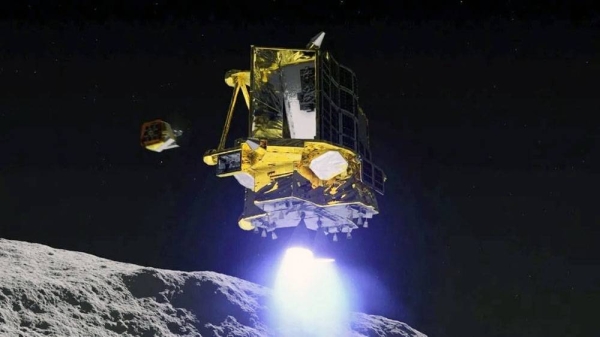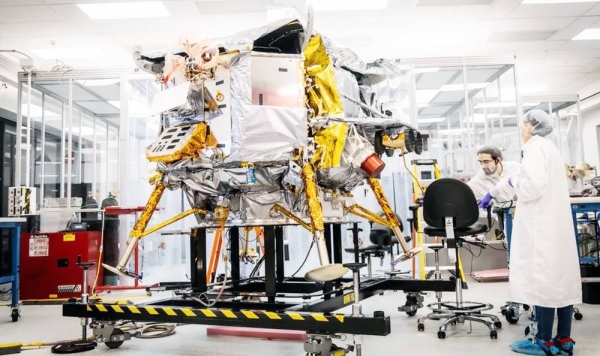
— A Japanese robot has successfully touched down on the Moon but problems with its solar power system mean the mission may live for just a few hours.
The Smart Lander for Investigating Moon (Slim) put itself gently on the lunar surface near an equatorial crater.
The feat made the Asian nation only the fifth country to soft-land on Earth"s natural satellite, after the US, the Soviet Union, China and India.
Engineers are now battling to save the mission, however. For reasons not yet fully understood, the craft"s solar cells will not generate electricity.
This leaves Slim totally reliant on its batteries and these will eventually discharge. When they do, the craft will go silent. It won"t receive commands and it won"t be able to talk to Earth.
Engineers are currently prioritizing activities.
They"ve turned off heaters and are pulling down pictures from the craft. They"re also retrieving data that will tell them how well the landing software worked.
Japanese space agency (Jaxa) officials will not immediately give up on Slim if it does fall silent. It"s always possible the solar cells have somehow become oriented in a way that prevents them from seeing the Sun.
As light angles change on the Moon, it was possible Slim could come back to life, the officials said.
Asked at a news conference whether Japan could justifiably claim a soft landing, Jaxa vice president, Hitoshi Kuninaka, said it could.
"If powered descent wasn"t successful, then there would have been a collision with the surface at a very high speed and spacecraft function would have been completely lost," he told reporters.
"But it is still sending data properly to us, which means our original objective of a soft landing was successful."
Slim was carrying two small rovers and telemetry indicates it managed to eject these as planned just before touchdown.
The craft, which carries an infrared camera, was to spend the next fortnight studying the local geology. How much of this investigation can be achieved in the time available is uncertain.
Statistically, it"s proven very hard to land on the Moon. Only about a half of all attempts have succeeded. Jaxa put its faith in new precision-navigation technologies.
The lander"s onboard computer used rapid image processing and crater mapping to avoid hazards to reach its touchdown point.
Engineers had wanted to get within 100m (330ft) of their targeted location and will now be studying data to see how well Slim performed.
But the early indications are that the technologies worked as designed.
"Looking at the trace data, I believe that Slim most certainly achieved a pinpoint landing with 100m accuracy.
“Of course, as we informed you in advance, it would take about a month to analyze the information accurately," Kuninaka said.
Slim began its descent maneuvers from an altitude of 15km (9 miles) at midnight into Saturday, Japan Standard Time (15:00 GMT, Friday). Touchdown occurred just after 15:20 GMT.
The landing location, near Shioli Crater, is currently bathed in sunlight but the darkness of lunar night will return there at the end of the month.
When that happens, temperatures will plummet to levels that are very capable of breaking electronic circuit boards.
Jaxa has twice landed robots on asteroids, so this Moon touchdown is another feather in its cap.
It will be playing significant roles in the US space agency"s (NASA) Artemis program, which seeks to put humans back on the lunar surface after a gap of more than half a century.
Last year, a private Japanese company, iSpace, had a go at landing. Its Hakuto-R craft crashed when the onboard computer became confused about its altitude above the Moon.
On Thursday, the private American company Astrobotic disposed of its Peregrine landing craft in Earth"s atmosphere.
A propulsion fault prevented it from even trying to make a touchdown attempt.
Dr. Simeon Barber from the UK"s Open University had instrumentation on Peregrine. He saluted the Japanese effort.
"For me, this was all about precision landing. That"s a huge Success. I"d be really happy if I was them," he told BBC News.
"We"re in an era of a lot of lunar missions happening with lots of different players. If we collate all this knowledge, that all these players are gaining through these attempts — whether successful or not — then we learn as a community how to put missions together more successfully in the future."
Likewise, Dr. Emma Gatti, from the digital magazine SpaceWatch Global, said Japan had much to celebrate: "It"s historic for them; it is a matter of prestige.
“It is important for Japan as a country; it"s important for all the investment they have made — proof that it can be done by a country not as big as China or US." — BBC












